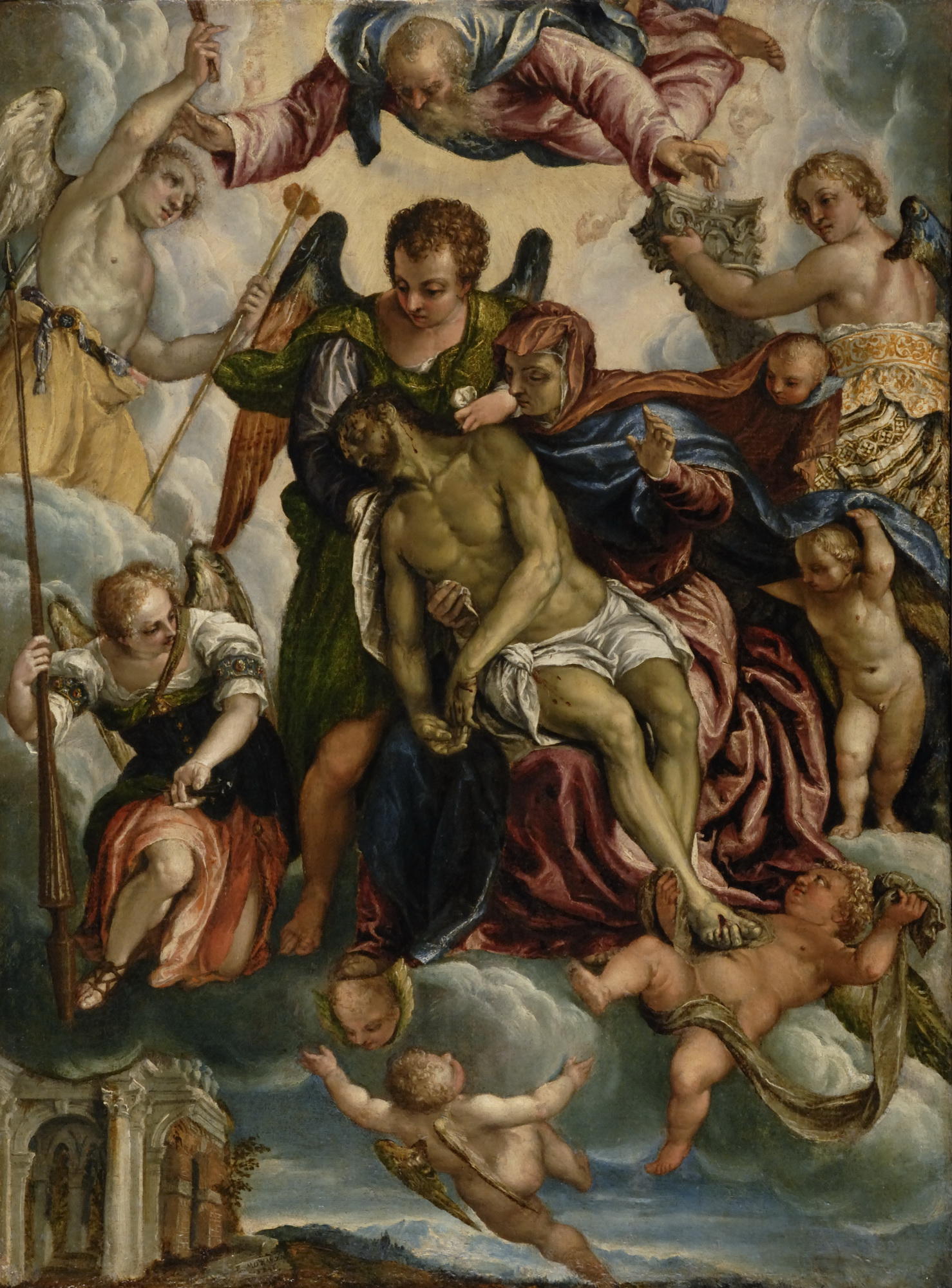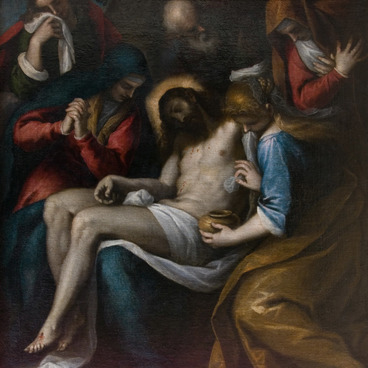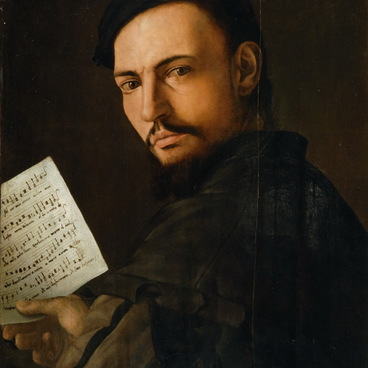The Veronese school was a late Gothic painting style that developed in the 14th century. Among outstanding representatives of the Veronese school were Italian artists Jacopo Altichieri, Francesco Bonsignori and later Stefano da Verona and Antonio Pisanello.
Lamentation
Creation period
after 1580
Dimensions
71,5x53 cm
Technique
oil in canvas
Collection
Exhibition
1
Open in app#6
In the collection of the Tambov Regional Picture Gallery, the Veronese school of painting is represented by only one painting — Lamentation by a 16th century Italian artist Francesco Montemezzano. It is one of the few works signed by the author. The master left most of his works unsigned.
#2
Francesco Montemezzano was born in Venice. He studied painting under Paolo Veronese, a famous author of paintings based on biblical stories and scenes. Like his teacher, Montemezzano created frescoes and worked using oil paint. Later, his work was influenced by a Renaissance artist Jacopo Tintoretto. At that time, artists were making a transition from planar to 3D images making their characters more realistic.
#5
Lamentation is a sketch for an altar composition, which was later placed in one of the churches. In his painting, Montemezzano referred to a biblical episode about the Passion of Christ: but all those who knew him, including the women who had followed him from Galilee, stood at a distance watching these things (Luke 23:49). The Lamentation was supposed to take place in the second half of Good Friday. The episode follows the removal of Jesus Christ’s body from the cross and precedes his burial. Most canonic texts do not have a description of the Lamentation of Christ, but this episode was often found in religious writings by late Gothic mystics. Later it became an iconographic scene unto itself and was featured by icon painters and 17th century European artists including Jacopo Palma the Junior, Jacques Bellange, Peter Paul Rubens and other artists.
#4
Francesco Montemezzano combined two spaces in his painting — heaven and earth. It is illustrated by the far-off mountain landscape and palace ruins that he placed in the foreground. The movement of Heavenly Forces makes a circle and ends with the figure of God the Father hovering in heaven. Around Jesus, the artist pictured angels holding the instruments of the Passion. One of them is holding the lance and nails, the second one, the Corinthian column that symbolized the pillar, to which Christ was tied to be scourged, and the third one, the sponge on a stick: it was dipped in vinegar and offered to the crucified Jesus to drink.
#7
It was believed for a long time that the painting was created by an unknown Venetian school artist, but in 1976, Vladimir Mikhailov, art historian at Tambov Gallery, deciphered the signature on the canvas. Six years later, Victoria Markova, Italian painting specialist at the Pushkin State Museum of Fine Arts, defined the subject matter of the painting more accurately and determined its date of creation — after 1580.
#8
Ministry of Culture of the Russian Federation
read morehide
00:00
00:00
1x
Lamentation
Creation period
after 1580
Dimensions
71,5x53 cm
Technique
oil in canvas
Collection
Exhibition
1
Open in app
Share



